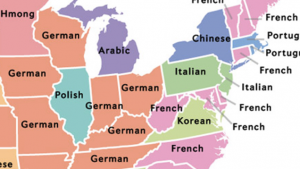It seems as if the Trump administration is following through on its promises to crack down on illegal immigration. With the rescission of the DACA, almost 800,000 people– people who have grown up in the United States and contributed to the nation– will have their lives impacted directly, taking on the brunt of this controversial decision.
What Is DACA?
The DACA, or Deferred Action for Childhood Arrivals, is an American immigration policy that allows individuals who illegally entered or remained in the United States a renewable two year period of deferred action from deportation. It also grants eligibility for a work permit. Established under the Obama administration in 2012, as of 2017, almost 800,000 “Dreamers” were counted. Dreamers refer to the individuals affected by the DREAM Act bill, a plan to eventually grant permanent residency from conditional residency. However, under the Trump administration, it was recently decided in September to rescind the DACA policy. Since September 5th, the rescission has been delayed to give Congress the proper time in deciding how to deal with the population that previously qualified under DACA. This is a question of granting residency to those who have contributed to the American society—albeit coming illegally—they have played an integral part in the economy. America is founded on freedom and equal opportunity, so then is terminating DACA really the right thing to do? The question that now faces America and the Trump administration in regards to illegal immigration and its prevention, as well as the care for immigrant residents: What should America’s policy on immigration include?
Why is DACA Important?
Although somewhat indirect and vague, the sticky DACA situation resonates greatly with the basic idea of human communication and translation. The problem with ending such a massive program abruptly is the way it will affect the 800,000, their families, and the United States—the work force, communities, and micro economies. There are a few complications that the administration failed to translate from what sounds like an efficient idea, to paper and practicality.
The first, being that those who applied for DACA—many of them crossing over to the United States while children—aren’t quite kids anymore. Most are in their 20’s, or even as old as 35. In other words, the Dreamers have grown up in the “1.5 generation”: unauthorized immigrants who are technically first generation residents in the United States. However, their life experience is basically in step with the second generation- U.S. born children of immigrants. They’ve grown up with a truly American experience. What politicians and lawmakers have failed to understand is the significant impact of deportation on this generation of Dreamers.
The second is the uncertainty DACA holders face. Although legislation was passed stating that the DACA program would be rescinded, there has been no clear-cut decision on how to handle the rescission. Without proper communication from the top down, many DACA recipients are unsure and left in a limbo of what their future holds. There’s the threat of deportation, especially those with criminal records, the threat of losing financial aid for students, workers who must leave their job; the list goes on and on.
The recent decision to uphold the Trump administration’s promise to crack down on illegal immigration may in the long run be detrimental to the United States. Many are affected by a decision such as this, and, one can’t help but question what America’s new attitude toward immigrants will mean. Despite where one might stand on the matter, the United States has always benefited from the inclusion of immigrants, and it may very well be in the country’s best interest to continue to do so.
Most Spoken Native Languages in United States

Finally, as we are in the business of translation services, we see the restrictions on immigration as they will effect the number of native speakers of languages most spoken in the United States. Of course, many of these immigrants affected by the latest developments are bilingual speakers, the majority of whom are native Spanish speakers.
List of Native Speakers of the Most Commonly Spoken Languages in U.S.
Language Population of Native Speakers
- English only – 237.8 million.
- Spanish – 40.5 million.
- Chinese (Mandarin and Cantonese) – 3.4 million.
- Tagalog (incl. Filipino) – 1.7 million.
- Vietnamese – 1.5 million.
- Arabic – 1.2 million.
- French (French and French Creole) 2.1 million
- Korean – 1.1 million.
What do you think about the decision to end DACA?
Sources:
- https://www.americanimmigrationcouncil.org/topics/legislation
- https://www.uscis.gov/archive/consideration-deferred-action-childhood-arrivals-daca
- https://www.nytimes.com/2017/09/05/us/politics/trump-daca-dreamers-immigration.html?mcubz=0
About Language Connections:
Language Connections is one of the top language service companies in the US. Over the last 30 years, we’ve focused on providing the best business translation services, interpreting services, as well as interpreter training and customized language training programs. In addition to top-tier corporate language training, we offer certified corporate interpreters and professional business translation services in 200+ languages. Our network includes linguists with backgrounds in all major industries. They’re ready to meet your needs, whether they’re for technical translation services, legal translation, government translation services, international development translation services, education translation services, life sciences translation, or something else. Reach out to us today for a free quote on our cost-efficient and timely translation services, interpreters, or other linguistic services.
Language Connections Inc.
2001 Beacon Street, Suite 105,
Boston, MA 02135
Phone: +1-617-731-3510
Email: service@languageconnections.com




